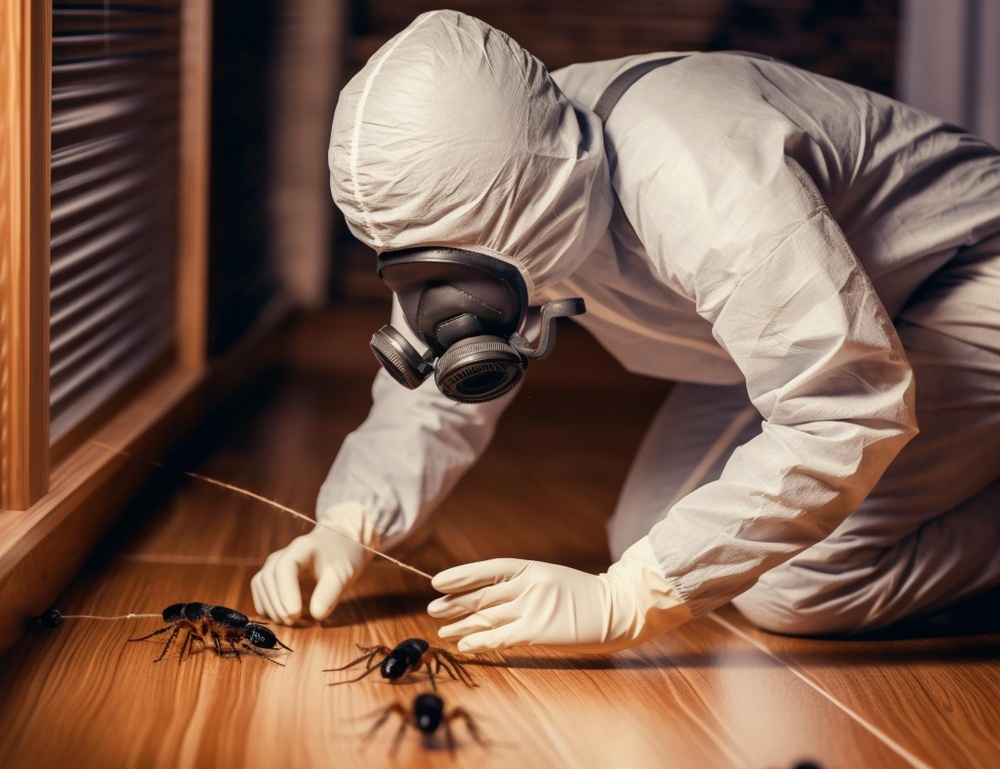Escrow Termite Inspection – What You Need To Know Part -1
 When buying a home, you do all you can to ensure that you have checked everything and covered all the bases so that you get the home you want. This means checking all the relevant documentation, looking for signs of structural problems, and evaluating the neighborhood, among others. One of the most important of these is the escrow termite inspection. Buying a home with a hidden termite problem can ruin the happiness of the purchase and cost you thousands in future repair bills. Here is what you need to know about pre-purchase termite inspection.
When buying a home, you do all you can to ensure that you have checked everything and covered all the bases so that you get the home you want. This means checking all the relevant documentation, looking for signs of structural problems, and evaluating the neighborhood, among others. One of the most important of these is the escrow termite inspection. Buying a home with a hidden termite problem can ruin the happiness of the purchase and cost you thousands in future repair bills. Here is what you need to know about pre-purchase termite inspection.
What Does The Inspection Entail?
A termite inspection is a complete inspection of a building by one of the professional local termite control companies. The process will examine the building for evidence of a termite infestation and also for any damage caused by present or past infestations. The inspection will search for conditions that are conducive to infestations. These include the presence of standing water, places where wood is in direct contact with soil, and plumbing leaks. The inspection will cover all accessible areas of the building, including crawlspaces, attics, basements, and the exterior. The inspection may take an hour or more, depending on the size of the house. After the inspection, you will be reported with all the results.
What Does The Report Include?
In California, an escrow termite inspection report should include:
- Details of any wood-destroying insects that are found.
- Details of any structural damage that may be found.
- Details of of conditions that are conducive to the development of infestations such as faulty grade levels, stagnant water, etc. should be noted.
- A diagram that shows the areas inspected and where termite activity has been found should form part of the report.
- Areas not inspected and the reasons why should also be given.
- Recommendations for termite treatment and damage repair should also be in the report.
Also Read: Should You Buy a House with Termite Damage?
Is A Termite Inspection A Legal Requirement?
In California, it is not a legal requirement. However, in most cases, lenders do require that the inspection be done to protect their investment. It is important to know that the inspection report will record the situation as of the date of the inspection. That means that old termite inspection reports are of little value and the new inspection should be done as close as possible to the close of escrow. It may be possible to include a termite contingency in the purchase terms that will enable you to pull out from the deal if termite damage is found, but that is not always possible and even if it is, obtaining a new termite inspection report is the better option.
Who Can See The Report?
Both the buyer and seller are entitled to see the report, irrespective of who has paid for it to be prepared. The person paying for the report must receive a copy within 10 days of the inspection being done and that person must then give a copy to the buyer or seller, as the case may be. The escrow company will normally ask for a copy of the report and if an infestation is found, may ask for the expected long-term results of termite control actions that will be done.
More aspects of the escrow termite inspection process will be covered in part 2 of this blog next month. If you are already close to closing on a house, contact a termite company in Southern California without delay.
Frequently Asked Questions
1. What is an escrow termite inspection?
An escrow termite inspection is a thorough examination of a home for evidence of termite infestations and any damage they may have caused. It's conducted by professional termite control companies before purchasing a property.
2. What does a termite inspection entail?
The inspection covers all accessible areas of a building, such as crawlspaces, attics, basements, and exteriors. It looks for signs of termite activity, damage, and conditions conducive to infestations like standing water and wood-soil contact.
3. What information does an escrow termite inspection report include?
The report includes details of any wood-destroying insects found, structural damage, conducive conditions, a diagram of inspected areas, uninspected areas with reasons, and recommendations for termite treatment and damage repair.
4. Is a termite inspection legally required in California?
No, a termite inspection is not legally required in California, but most lenders require it to protect their investment. It's advisable to get a new inspection close to the escrow closing date for an accurate assessment.
5. Who can see the termite inspection report?
Both the buyer and seller can see the report, regardless of who paid for it. The person who paid must receive a copy within 10 days of the inspection and then provide a copy to the other party. The escrow company also typically requests a copy.
6. What should I do if termite damage is found during the inspection?
If termite damage is found, the inspection report will include recommendations for termite treatment and damage repair. You may negotiate with the seller for repairs or consider including a termite contingency in the purchase terms.
- Jul 31, 2024
